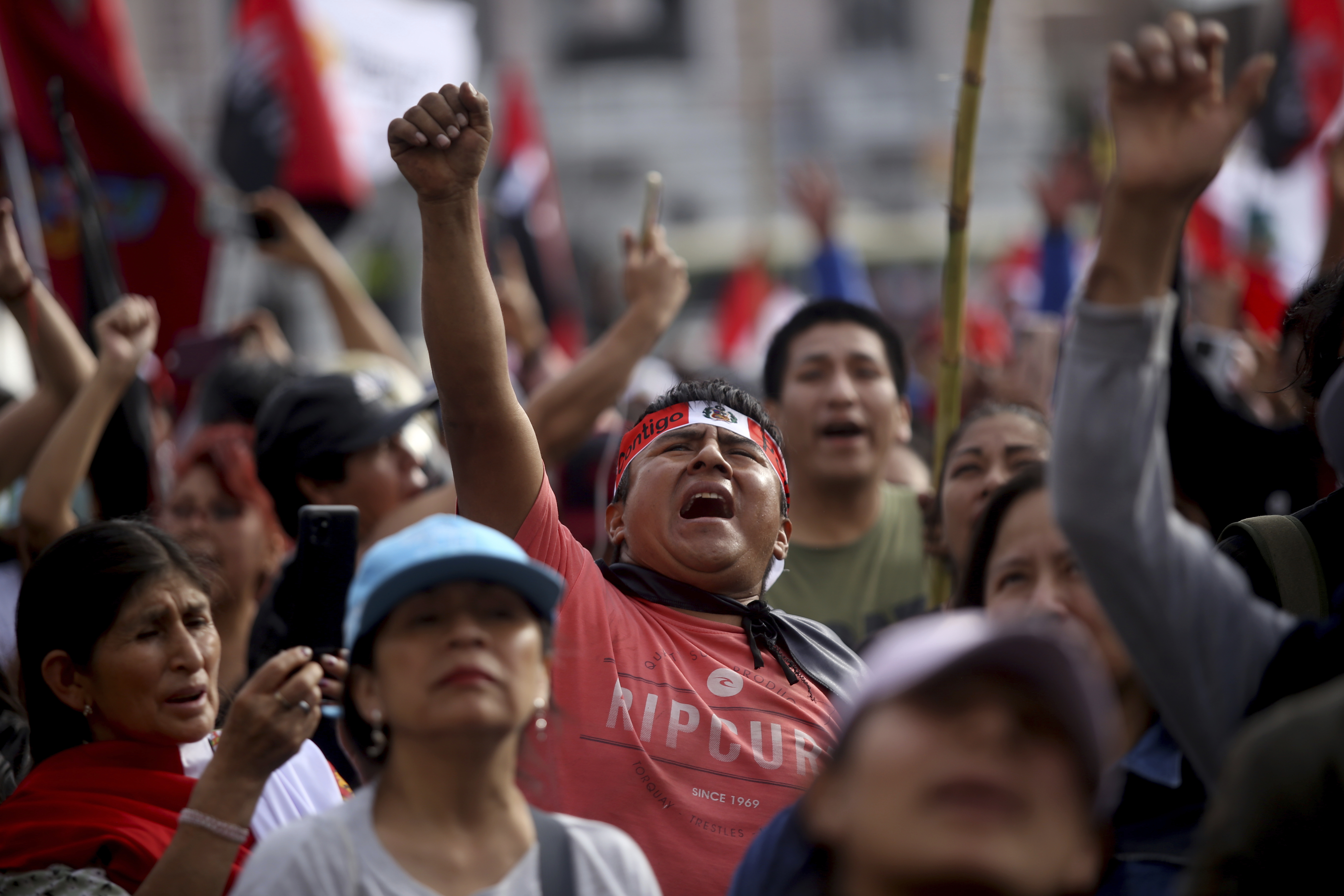Peru's Humala Completes First Year with Mixed Marks
Peru's Humala Completes First Year with Mixed Marks
Peruvians give President Ollanta Humala high marks for the country’s strong economic growth and social spending, but concerns over mining protests weigh down his approval numbers.
Recent polls show that not all Peruvians are pleased with President Ollanta Humala’s first year in office. An Ipsos Apoyo poll this month shows support for the president falling to 40 percent—a 5 percent drop over the previous month and 25 points below the popular high he reached in September 2011. Another polling firm, Datum, asked Peruvians to “grade” their president’s performance in his first year. Respondents gave him 11.4 out of a possible 20. However, Ipsos Apoyo notes that the president’s approval rating is better than that of his two predecessors at the one-year mark; 12 months in, Alan García held 32 percent approval while Alejandro Toledo was at 18 percent.
Analysts say Humala’s relatively high level of support owes to strong economic growth and the president’s dedication to social programs. Meanwhile, conflict over mining—especially the eight-month dispute over the Conga mining project—“is the biggest single factor in explaining the deterioration of Humala’s image” writes Ipsos Apoyo’s Alfredo Torres in his July report. The poll finds nearly 70 percent of respondents disapprove of Humala’s handling of the mining conflicts. Data from Datum confirms these findings, with respondents citing “social conflicts” as their main source of disapproval.
Peru’s economic growth and social programs under Humala attract the most praise from Peruvians. Peru’s GDP grew an average of 5.75 percent a year over the past decade and is on track to hit 5.8 percent this year. However, not all Peruvians shared equally in this growth and Humala came to power promising “growth with social inclusion,” vowing to improve the lives of the nearly one third of Peruvians living in poverty. To that end, he increased the budget for social inclusion programs, passed a minimum wage hike, created a state pension program for the indigent elderly, approved a number of scholarships for disadvantaged youth, and expanded other conditional cash-transfer programs for poor Peruvians. These programs, as well as the strong performance of the country’s resource-led economy, buoy Humala’s approval, with poll respondents naming them among the top of his government's achievements in the past year. Furthermore, 63 percent of Peruvians say Humala’s first year has been equal to or better than expected.
But the government’s handling of at-times violent mining protests dent that support. Mining investment helps drive the country’s GDP growth and record profits from the industry fund social programs. Still, new projects continue to attract protests. Residents close to mining areas worry about environmental degradation and want to see their communities receive a fair share of profits. Such concerns drive protests throughout the country, and the conflict over the Newmont Mining Company’s $4.8 billion Conga mine in the northern province of Cajamarca is among the most significant. Work there has been stalled since November because of protests, with at least five protesters killed this month. The deaths prompted the government to declare a state of emergency in the region earlier this month. Anti-mining protests also led to the declaration of a state of emergency in the southeastern province of Espinar in May. Ipsos Apoyo’s polls shows that most Peruvians back the government’s decision to invoke these states of emergency, as well as to proceed with the Cajamarca mining project—though with modifications. Newmont agreed to comply with stricter environmental regulations as suggested in a government report, but protests continue.
The reasons behind Humala’s approval ratings show the complexity of the challenges ahead for the president, says an AméricaEconomía editorial: “On the one hand, he must follow through on his campaign promises to reduce inequality in Peru, where 30 percent of the population lives below the poverty line. On the other hand, he must guarantee conditions so that both national and foreign companies can invest with confidence.” Finding a way to balance the most popular and unpopular aspects of his presidency will be key to his success, says the magazine.
Learn More:
- Access the Peruvian Council of Ministers announcement on the declaration of the state of emergency in Cajamarca.
- Learn about Humala’s first 100 days in office in an AS/COA Online News Analysis.
- Read an AS/COA Online News Analysis about the early days of the Conga conflict, providing more background on the conflict.
- Access Ipsos Apoyo’s July 2012 public opinion report, and visit Datum’s website for their public opinion surveys.
- Read an editorial from AméricaEconomía evaluating Humala’s first year in office.








